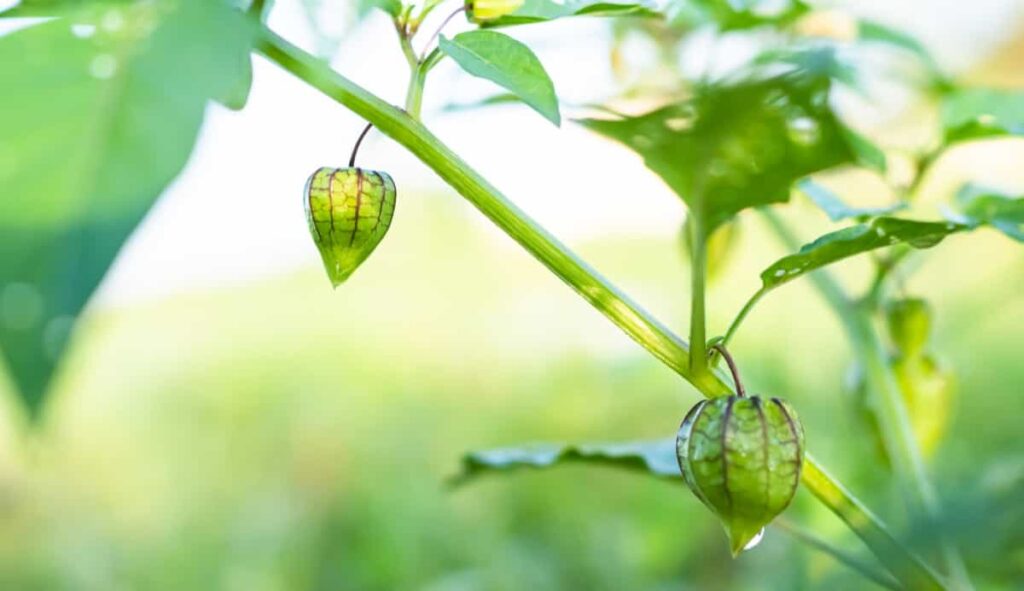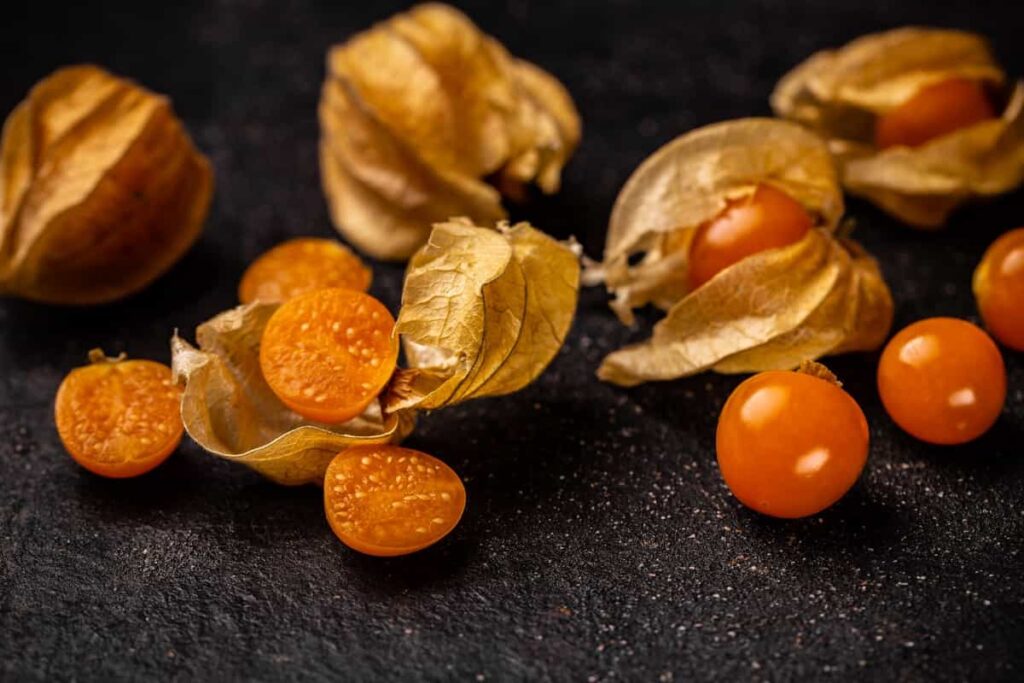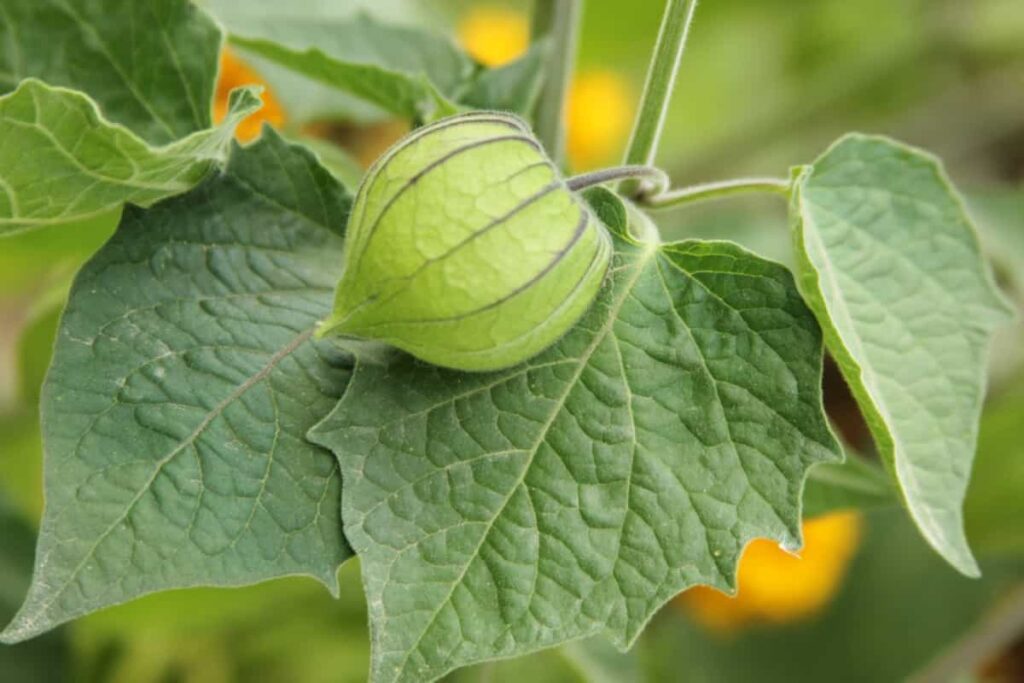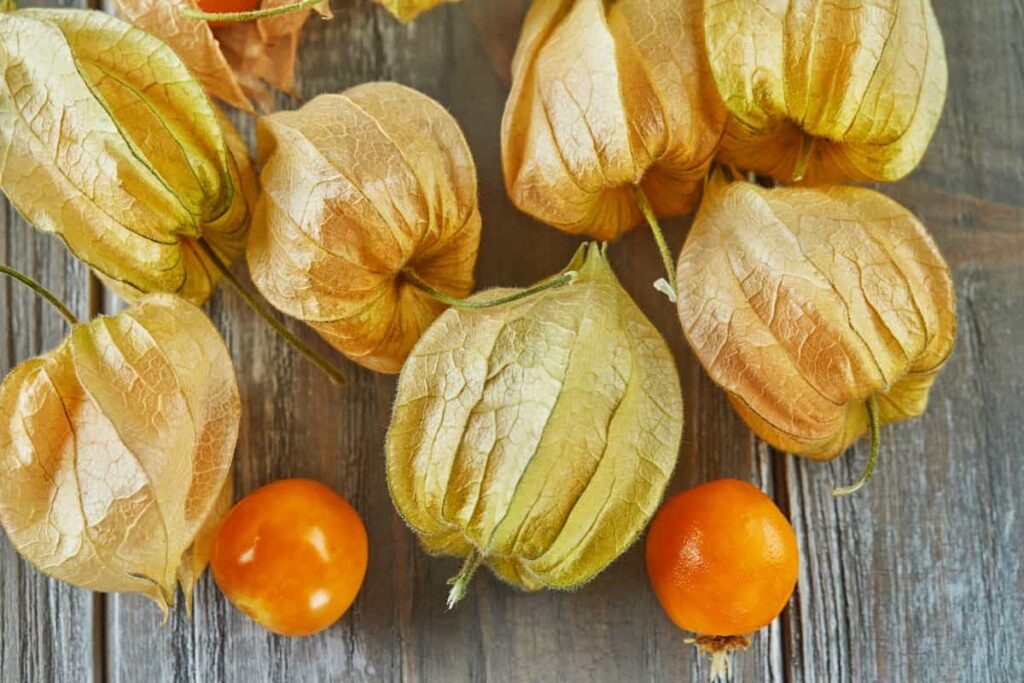Golden Berry farming in India thrives with specific practices. Known as Cape gooseberries, these plants favor well-drained, sandy soils and moderate climates. Key to success includes controlled irrigation, pest management, and strategic harvesting to ensure high-quality, flavorful berries.

Golden Berry Farming in India
Climate and Soil Requirements
The cultivation of Golden Berry flourishes in a particular climatic and soil environment. These berries thrive in temperatures ranging from 13-18°C (55-64°F), with a preference for moderate to warm conditions for their best development. Frost is a threat since it can harm plants. These plants need soil that is well-drained and rich, with a pH level between 6.0 and 6.5, which is slightly acidic to neutral.
Increased levels of organic matter improve the quality of soil, resulting in higher yields of berries. Consistent irrigation is essential, yet excessive watering might result in root decay. Optimal exposure to direct sunlight is crucial for promoting robust plant growth. To summarize, Golden Berries thrive in temperate climates, rich and well-drained soils with a balanced pH and abundant sunshine. They need meticulous water management to avoid excessive saturation.
Varieties of Golden Berries Suitable for Indian Conditions
- Peruvian Golden Berry (Physalis peruviana): Renowned for its sweet-tart taste, this variety is resilient to diverse climates, flourishing in both temperate and tropical regions of India.
- Poha Berry (Physalis peruviana var. ‘Poha’): A Hawaiian variant, Poha Berry adapts well to Indian coastal regions, offering a milder, sweeter flavor.
- Long-Stalked Ground Cherry (Physalis longifolia): With a more subtle sweetness, this species is well-suited to the Indian subcontinent’s varied climates.
- Strawberry Ground Cherry (Physalis pruinosa): This type, distinguished by its strawberry-like taste, thrives in India’s temperate zones.
Propagation Methods for Golden Berry
Cuttings or seeds are both viable methods of propagating the Golden Berry, also known as Physalis peruviana. The process of seed propagation entails planting seeds in soil that has good drainage, preferably before the beginning of spring, while also providing a warm and bright environment to facilitate germination. Healthy plant cuttings should measure around 6 inches in length, with lower leaves removed, and be planted in a peat and perlite combination.
In case you missed it: Optimizing Indian Gooseberry/Amla Orchard Management: A Month-by-Month Operation Guide for Maximum Yield

Both approaches need regular watering and safeguarding against severe circumstances. Prior to transplantation, it is advisable to progressively expose seedlings and rooted cuttings to outside circumstances in order to acclimatize them. Applying a well-balanced fertilizer solution during fertilization promotes robust and vigorous development. This method guarantees the effective reproduction of Golden Berries by integrating conventional horticulture expertise with contemporary growing methods.
Number of Golden Berry Plants Required Per Acre
In order to ascertain the quantity of Golden Berry plants required per Acre, we first take into account the suggested spacing. Golden Berries flourish when planted with a spacing of around 2-3 feet between individual plants and 5 feet between rows. This gap facilitates sufficient expansion and ventilation.
With an acre of 43,560 square feet and a median spacing of 2.5 feet between plants and 5 feet between rows, it is possible to cultivate around 3,484 Golden Berry plants per Acre. The computation is derived by dividing the entire area by the multiplication of the space between rows and plants. This is a pragmatic manual for optimizing crop output while guaranteeing robust plant development. Please note that local variables such as soil composition, climate, and the specific variety of Golden Berries may cause modest variations in this figure.
Land Preparation and Planting of Golden Berries
To prepare land for Golden Berries, choose a sunlit area with good drainage, conduct a pH test, add organic materials, and ensure frost risk has subsided Plant Golden Berry seedlings with 0.6 meters spacing between plants for development and air circulation. Consistent irrigation is crucial, but excessive water saturation should be avoided.
Mulching helps preserve moisture and manage weed growth. Structural support with stakes or cages is also essential. Regular maintenance leads to a bountiful yield, ensuring Golden Berries thrive. This approach aligns agricultural operations with the unique requirements of Golden Berries, maximizing output and fostering robust development.
Best Fertilizers for Golden Berries
Golden berries, renowned for their distinctive taste and high nutritional content, flourish when provided with targeted fertilization. An ideal combination of fertilizers consists of nitrogen, phosphorous, and potassium, often in a 10-10-10 NPK ratio. Utilizing organic alternatives such as compost or well-decomposed manure enhances the overall quality of the soil, resulting in improved growth and health of golden berries.
In case you missed it: How to Propagate Snake Plants: A Step-by-Step Guide

In addition, bone meal is very effective in providing phosphorus, which enhances robust root growth and stimulates blooming. Potassium is essential for the quality of fruits and may be enhanced by adding potash. It is crucial to keep away from excessive fertilizing since it might have detrimental effects on the health of plants. It is advisable to do regular soil testing in order to preserve the ideal nutrient levels. This customized method guarantees that golden berries get the precise nutrients necessary for vigorous development and bountiful harvests.
Weed and Pest Management in Golden Berry Cultivation
Effective weed and pest management is essential for maintaining the health of a golden berry crop. Herbicides, such as glyphosate, are often used for weed management. However, non-chemical approaches like mulching or human weeding are also very successful. Specialized pesticides that specifically target prevalent nuisances, such as aphids or caterpillars, are used to combat pests.
Furthermore, the use of (IPM) strategies, which include the combination of biological controls such as beneficial insects and limited use of chemicals, has been shown to be very successful. Consistent surveillance of the crops to promptly identify issues is crucial. These strategies provide a harmonious equilibrium between efficient weed and pest management and environmental sustainability.
Harvesting and Post-Harvest Management of Golden Berries
Golden Berries, also known as Physalis peruviana, are delicate fruits that require careful harvesting and storage. They should be collected at peak maturity, a yellow-orange color with a thin husk. After harvesting, the produce should be stored at 1-2°C to maintain freshness and shelf life. Adequate humidity is crucial to prevent dehydration. Gentle handling is also essential to prevent damage.
In a controlled environment, decreasing oxygen levels can achieve long-term preservation. Chilling the harvested produce quickly is recommended. When handled well, Golden Berries can retain their freshness for several weeks, making them suitable for long-distance transportation. This method prioritizes detailed collection and careful handling to ensure optimal delivery to customers.
Yield of Golden Berry/Cape Gooseberries Per Acre
The Golden Berry, sometimes referred to as Cape gooseberry, normally produces a yield ranging from 0.5 to 3 tons per Acre. Several factors, including climate, soil quality, and growing techniques, influence the range. Optimal conditions, including soil with good drainage, sufficient sunshine, and appropriate maintenance, may enhance yields, leading to better productivity.
Differences in specific circumstances, however, might lead to varying results. Farmers must prioritize these aspects to optimize crop productivity. To summarize, the yields of Golden Berry are inconsistent and greatly influenced by environmental and agricultural conditions. On average, the output ranges from 0.5 to 3 tons per Acre.
Economic Potential
Goldenberry farming is a promising agricultural venture with significant economic potential due to its adaptability and low maintenance requirements. These small, tangy fruits are gaining popularity globally due to their rich nutritional profile and use in health foods. With moderate initial investment costs and a substantial yield per Acre, farmers can tap into international demand. Export markets are expanding, making golden berry cultivation a profitable avenue for agribusiness.
In case you missed it: Agricultural Applications of Azolla: Exploring Azolla Miracles in Farming

Government Schemes and Support
- National Horticulture Mission (NHM): Provides financial support for new and old orchards, infrastructure, organic farming, and market linkages. Offers up to 50% subsidy on planting material, drip irrigation, fertigation, mulching, and trellising.
- Rashtriya Krishi Vikas Yojana (RKVY): Aims to enhance agriculture and allied sectors’ productivity and profitability. States have autonomy in project planning and execution. Offers up to 60% subsidy for new orchards, infrastructure, and integrated pest management.
- Mission for Integrated Development of Horticulture (MIDH): Consolidates various horticulture programs, promoting sector-wide development. Offers up to 50% subsidy on planting material, drip irrigation, fertigation, mulching, and trellising.
Frequently Asked Questions (FAQ) on Golden Berry Farming in India
How Long Does It Take for a Golden Berry Plant to Start Producing Fruit?
Golden Berry plants typically begin to bear fruit within a few months of planting, with full productivity reached in the second year.
Can Golden Berries Be Processed into Other Products?
Yes, they can be processed into jams, jellies, and dried fruits and even used in baking and cooking for added flavor.
Conclusion
Golden Berry farming in India thrives with well-drained soil and moderate temperatures. Key practices include regular pruning, controlled watering, and pest management. Optimal fertilization enhances yield, while careful harvesting ensures the quality of these nutrient-rich Cape gooseberries.
- Profitable Village Farming Business Ideas in 2024
- High-Yield Aquaculture: Fast-Growing Fish for Farming
- Effective Fish Pond Construction Techniques for Beginners
- Irrigation and Water Management in Pineapple Farming
- Blossom to Harvest: Mastering Flowering and Pollination in Papaya Farming
- Pig Fattening Essentials: From Selection to Sale for Beginners
- Raising Wagyu Cattle: A Complete Guide for Premium Beef Production
- Soil Types and Their Water Holding Capacity
- Optimizing Irrigation Schedules for Coconut Groves for Enhanced Yield
